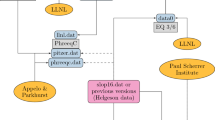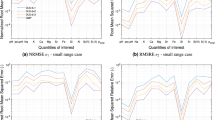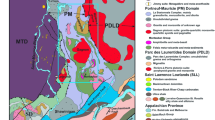Abstract
The OECD Nuclear Energy Agency (NEA) works as a forum for sharing and analyzing information and experience among member countries, fostering international co-operation in the nuclear field, helping member countries to pool and maintain their technical expertise and human infrastructure, and supporting nuclear activities by providing member countries with nuclear policy analyses as stated in its Strategic Plan 2011–2016. Under this umbrella, the Thermochemical Database project emerged with the aim of defining an internationally recognized set of recommended thermochemical data to support the geochemical modelling of high-level radioactive waste disposal. Such data are selected on the basis of a well-defined review procedure which is coordinated by the NEA and are freely available. These efforts have resulted in the publication of thirteen major reviews containing selected values for around 1500 species, out of which more than 700 aqueous species, 650 solids and 150 gases. Additionally, six publications are currently under preparation. The key aspects of the Project, its accomplishments and future actions are outlined herein.

Similar content being viewed by others
References
Allard, B., Banwart, S.A., Bruno, J., Ephraim, J.H., Grauer, R., Grenthe, I., Hadermann, J., Hummel, W., Jakob, A., Karapiperis, T., Plyasunov, A.V., Puigdomenech, I., Rard, J.A., Saxena, S., Spahiu, K.: Modelling in Aquatic Chemistry. Nuclear Energy Agency Data Bank, Organisation for Economic Co-operation and Development (ed.) OECD Publishing, Paris (1997)
Wanner, H.: Solubility data in radioactive waste disposal. Pure Appl. Chem. 79, 875–882 (2007)
Ragoussi, M.E., Brassinnes, S.: The NEA Thermochemical Database Project: 30 years of accomplishments. Radiochim. Acta 103, 679–685 (2015)
Cox, J.D., Wagman, D.D., Medvedev, V.A.: CODATA Key Values for Thermodynamics. Hemisphere Publishing Corporation, New York (1989)
Muller, A.B.: International chemical thermodynamic database for nuclear applications. Radioactive Waste Manag. Nucl. Fuel Cycle 6, 131–141 (1985)
Mompeán, F., Wanner, H.: The OECD Nuclear Energy Agency thermochemical database project. Radiochim. Acta 91, 617–622 (2003)
Cohen, E.R., Cvitaš, T., Frey, J.G., Holmström, B., Kuchitsu, K., Marquardt, R., Mills, I., Pavese, F., Quack, M., Stohner, J., Strauss, H.L., Takami, M., Thor, A.J.: IUPAC Quantities, Units and Symbols in Physical Chemistry. IUPAC and RSC Publishing, Cambridge (2007)
TDB-0-TDB-6. TDB project guidelines. NEA website PDF documents, http://www.nea.fr/html/dbtdb/guidelines
TDB publications and database are available at http://www.oecd-nea.org/dbtdb/
Ragoussi, M.E., Costa, D.: Fundamentals of the NEA Thermochemical Database and its influence over national nuclear programs on the performance assessment of deep geological repositories. J. Environ. Radioact. (2017). doi:10.1016/j.jenvrad.2017.02.019
Ragoussi, M.E., Costa, D., Bossant, M.: Towards the renewal of the NEA Thermochemical Database. NEA News 33(2), 25–27 (2015)
Funding
The NEA TDB Project’s fifth phase (TDB-5: 2014-2018) is supported financially by the following organizations: Organisation for Radioactive Waste and Enriched Fissile Materials (NIRAS/ONDRAF) in Belgium, Nuclear Waste Management Organization (NWMO) in Canada, Radioactive Waste Repository Authority of the Czech Republic (RAWRA), Posiva OY (POSIVA) in Finland, National Radioactive Waste Management Agency (ANDRA) in France, Commissariat à l’Énergie Atomique et aux Énergies Alternatives (CEA) in France, Karlsruhe Institute of Technology (KIT) in Germany (funded for the purpose hereof by the Federal Ministry for Economic Affairs and Energy (BMWi)), Japan Atomic Energy Agency (JAEA), National Agency for Radioactive Waste (ENRESA) in Spain, Nuclear Fuel and Waste Management Company (SKB) in Sweden, Swiss National Co-operative for the Disposal of Radioactive Waste (NAGRA), Paul Scherrer Institute (PSI), Swiss Federal Nuclear Safety Inspectorate (ENSI) in Switzerland, Radioactive Waste Management (RWM) in the United Kingdom, and the United States Department of Energy (DoE).
The opinions expressed and arguments employed herein are those of the authors and do not necessarily reflect the official views of the OECD or of the governments of its member countries.
Author information
Authors and Affiliations
Corresponding author
Rights and permissions
About this article
Cite this article
Costa, D., Ragoussi, ME. Selection of Reference Thermodynamic Data for Modelling of Deep Geological Repositories: Present and Future of the NEA Thermochemical Database Project. J Solution Chem 46, 1760–1766 (2017). https://doi.org/10.1007/s10953-017-0631-x
Received:
Accepted:
Published:
Issue Date:
DOI: https://doi.org/10.1007/s10953-017-0631-x




